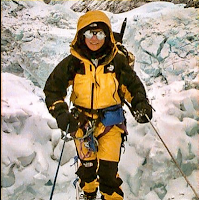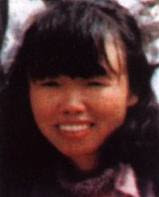“Tears
streaking my cheeks, weeping like I hadn’t wept since I was a small boy. Safe
now, the crushing strain of the preceding days lifted from my shoulders, I
cried for my lost companions, I cried because I was grateful to be alive, I
cried because I felt terrible for having survived while others had died.”
The
final chapters of Into Thin Air is where many characters’ social
standing are revealed by remorse and with their interactions with the team.
While viewing this novel in a feminist perspective, I quickly realized that it
was written in a Phallocentric Narrative perspective. I noticed that there were
many different types of character, but very few of them were female. The women
that the author explains either are doctors at base camp or loved ones back at home
or the one climber slowing down the rest of the team. The impression it gave to
me was that women are not fit enough for the trek up Mt. Everest. The tone and
the lacking presence of women almost makes it feel like women do not or have
very little place on the mountain. I do not believe that the author intended
for the female characters to be presented in such a negative way, instead it
was just how the many events played out.
When
looking closer at Krakauer’s relationships throughout the novel, it is apparent
that he bonds more with his fellow male climbers. Krakauer considers Rob Hall,
Scott Fischer, Doug Hansen and Andy Harris as role models. The author explains
the masculinity and heroism of many of the male characters. For example, “Fischer saw no reason to waste cash on medical
treatment for such a minor injury, so he climbed for the next six months with
an open, suppurating wound” (Krakauer 87). Krakauer seems to be profoundly
drawn towards Fischer’s “raw and emotional, disinclined toward introspection,
he had the kind of gregarious, magnetic personality that instantly won him
friends for life; hundreds of individuals – including some he’d met just once
or twice – considered him a bosom buddy” (Krakauer
88). During the weeks leading up to reaching the summit he becomes very close
with Andy. Krakauer states “Andy, who revealed himself to be a gifted,
extremely patient teacher- and who, as the junior guide, had been assigned to
climb with the slowest clients, at the rear” (Krakauer 104). Krakauer only
talked positively about his fellow male climbers, so when many of them died he
felt guilty and the burden of carrying the rest of the team down to safety. I
noticed that Krakauer has opposite views, considering that there are very few
sections that are dedicated to positively representing Sandy and Yasuko.
 |
| Highlighted individuals lost in 1996 disaster: Doug Hansen, Andy Harris, Rob Hall, and Yasuko Namba |
The
two women that Krakauer continuously mentions are Yasuko Namba and Sandy Hill
Pittman. These women are very opposite from each other. Sandy comes from power
and money back in the US, she uses this power to try and control what happens
on the mountain. “Her name was Sandy Hill Pittman, and nobody on the mountain
cut a higher profile or generated as much gossip” (Krakauer 164). Beck boldly
remembers how needy Sandy was on their ascent of Vinson Massif in Antarctica.
He states “She brought this humongous duffel bag full of gourmet food that took
about four people to even lift. She also brought a portable television and
video player so she could watch movies in her tent” (Krakauer 168). Krakauer
and the other climbers are aware that Sandy lacks the skill and strength to
reach the peak. That is why she orders Lopsang, a Sherpa, to carry her eighty
pounds of satellite equipment, so she can broadcast from the peak. This selfishness
reminds me of the movie, Dr. Seuss ‘How the Grinch Stole Christmas’. When the
Grinch steals the presents from the people of Whoville, he makes his dog Max
drag the shield full of presents and countless times it nearly runs him over.
Lopsang was already exhausted from hauling up the heavy equipment, so when he
“towed Pittman on a short-rope for five or six hours” he nearly collapsed
(Krakauer 201). Not only is she unqualified, she also has been putting a burden
on her team’s progress up Everest. Later on in the novel Krakauer expresses how
timing is everything. When an individual like Sandy slows down the team the
consequences can be deadly. In this case, it was running into the deadly storm.
Krakauer strongly stated that if the snowstorm came “two hours later, it is
likely nobody would have died”. On the other hand, if the storm came earlier
there was a chance that more people would have died. The role of Sandy is still
unclear, but her oppression makes the team suffer in the end.
 |
| Sandy Pittman on Everest |
Yasuko Namba was another female present during the
expedition. She had more skill and strength than Sandy Pittman. She did not
play the typical female role at home, “An accomplished business women employed
by Federal Express in Tokyo, Yasuko didn’t fit the meek, deferential stereotype
of a middle-aged Japanese woman. At home, she’d told me with a laugh, her
husband did all the cooking and cleaning” (Krakauer 199). Yasuko was the second
Japanese woman to arrive at top of all seven summits. Her endurance made her
well respected in the climbing field. She was able to carry her own weight,
only relying on the guides for direction. As the team neared the summit Yasuko
grew as more of a liability to the team rather than an asset. Her mask ran out
of oxygen and she started hallucinating. Krakauer expresses how obvious it was
that she was struggling, “Namba’s oxygen ran out, and the diminutive Japanese woman
sat down, refusing to move. When I tried to take her oxygen mask off so she
could breathe more easily [...] that mask was actually suffocating her”
(Krakauer 226). These events accounted for the delay in time, making the team
get caught in the eye of the storm. It was shocking how the novel ended with
the deaths of many, including Namba.
The fact that the less skilled Sandy Pittman survived and Namba died. Krakauer is not trying to negatively depict women, he is indicating how no one is free from danger on Everest. “In fact, over the past 30 years there have been 418 women who have successfully reached the summit, according to the Himalayan Database. They have been from a wide variety of backgrounds, with different ages, nationalities, socioeconomic status, and reasons for attempting this incredibly dangerous feat” (Funk). Fifty women have finished all the Seven Summits which is an incredible accomplishment of women.
The fact that the less skilled Sandy Pittman survived and Namba died. Krakauer is not trying to negatively depict women, he is indicating how no one is free from danger on Everest. “In fact, over the past 30 years there have been 418 women who have successfully reached the summit, according to the Himalayan Database. They have been from a wide variety of backgrounds, with different ages, nationalities, socioeconomic status, and reasons for attempting this incredibly dangerous feat” (Funk). Fifty women have finished all the Seven Summits which is an incredible accomplishment of women.


No comments:
Post a Comment